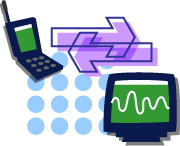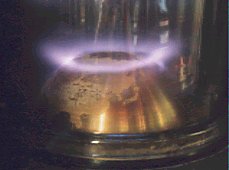 |
Welcome to My Web Page about Low-latitude Aurora !
by Yoh Nakazawa (Niigata Prefectural Maki High School) |
| HOME|私の研究|オーロラの神秘|新潟でオーロラを!|天文学のすすめ|My ギャラリー|English page|星と空の俳句|星空のかなたに|新潟県立自然科学館 へ|巻高同窓会 へ |
 |
 Aurora Aurora |
The aurora is one of the most magnificent phenomena on the Earth. Electrons from the upper atmosphere collide with the air and oxygen and nitrogen molecules radiate beautiful visible light. Electrons, the major components of auroras appearing in the space, exist in the area which is called the magnetosphere of the earth with a unique shape of flow. These electrons jump down into the air along the line of the terrestrial magnetic force. Auroras can be observed both in the Arctic and the Antarctic with the highest terrestrial magnetism, but sometimes when the sun is active, we are able to see the northern lights (aurora borealis) even in Japan. On February 11,1958, here in Niigata a beautiful shining red aurora was observed in the direction of north beyond the Sea of Japan. |
 |
 Low-latitude Aurora Low-latitude Aurora |
Though Japan is not a suitable place to observe auroras,strong auroral displays were sometimes observed when the solar activity was very high. Not only these "naked-eye auroras" but also weak auroral displays were observed more often by using highly sensitive observational techniques. Low-latitude auroras are rather common phenomena if we include very weak displays. |
 |
 |
 The "SEKKI" Phenomena in Japanese Historical Literatures The "SEKKI" Phenomena in Japanese Historical Literatures |
"SEKKI" phenomena often appear in the Japanese historical literatures as distinct red emission in the nocturnalsky. The Japanese word "SEKKI" means the red atmosphere. We compared 2 events of SEKKI on February 21, 1204, and September 17, 1770, with the characteristics of low-latitude auroras studied recently by modern scientific methods. We conclude that these historical SEKKI phenomena are probably giant low-latitude auroras. |
 |
 < Information > < Information > |
 |
Our short paper was accepted in the e-letter section of EPS (Earth, Planets and Space). "Understanding the "SEKKI" phenomena in Japanese historical literatures based on the modern science of low-latitude aurora" by Y. Nakazawa, T. Okada, and K. Shiokawa |
 |
 Aurora Display in Laboratory Aurora Display in Laboratory |
The aurora observed from the space appears as ring in whole space, encircling the pole. Such a ring-like form of the aurora can be reproduced by the Aurora Display Device in Laboratory. On the earth model a light purple aurora can be seen as a ring floating around the pole. ( Niigata Science Museum) |
 |
 |
 LINK LINK |
 [ EPS (Earth, Planets and Space) ] [ EPS (Earth, Planets and Space) ] |
|
 [ Science Links Japan ] [ Science Links Japan ] |
 |
| HOME|私の研究|オーロラの神秘|新潟でオーロラを!|天文学のすすめ|My ギャラリー|English page|星と空の俳句|星空のかなたに|新潟県立自然科学館 へ|巻高同窓会 へ |
|
